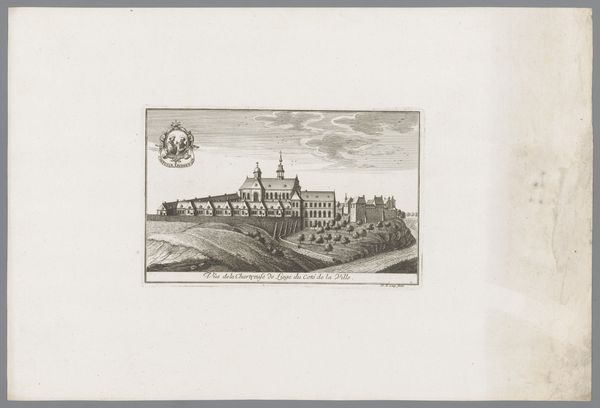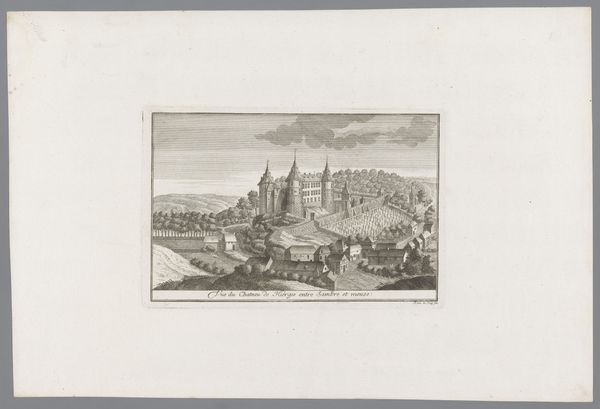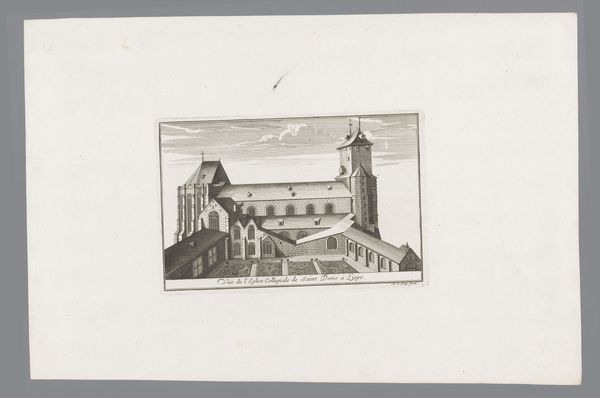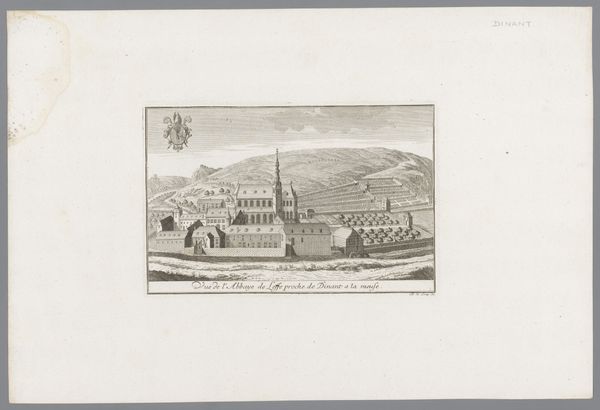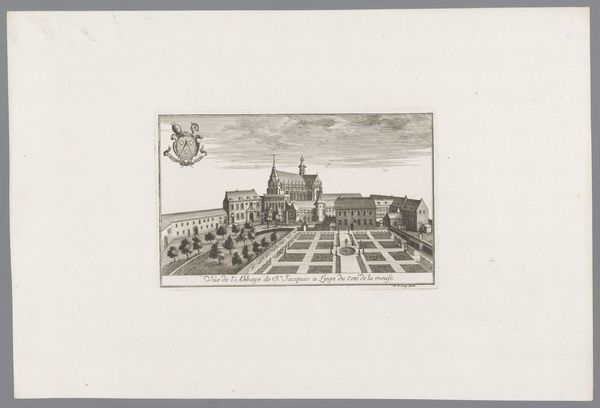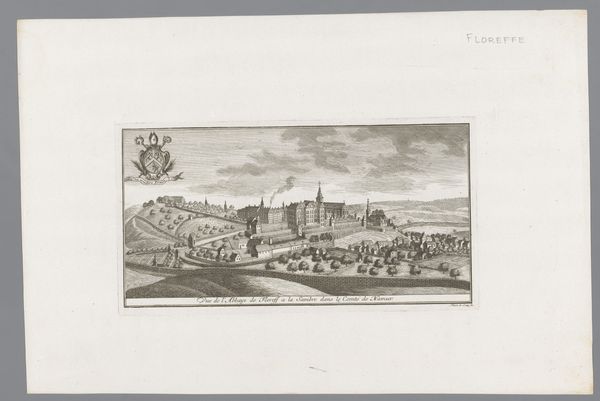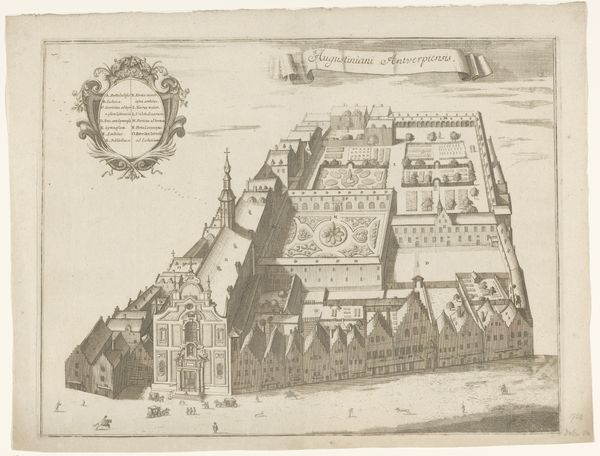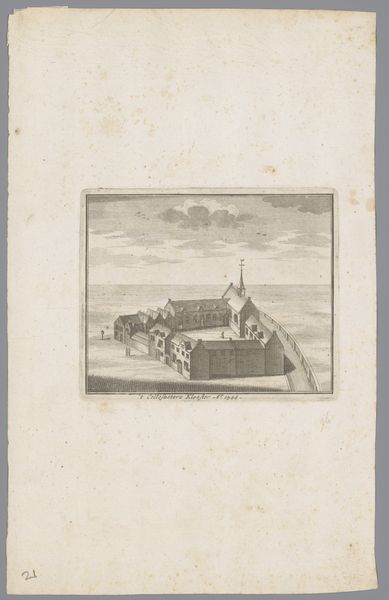
print, engraving, architecture
#
baroque
# print
#
landscape
#
engraving
#
architecture
Dimensions: height 145 mm, width 219 mm
Copyright: Rijks Museum: Open Domain
Editor: Here we have an engraving, dating from somewhere between 1738 and 1744, entitled "View of the Saint Laurent Abbey in Liege." It gives quite a comprehensive architectural view of the abbey, rendered meticulously. What can you tell me about how it was made and the process of its production? Curator: It is interesting to think about how these images were created and consumed. This image relies heavily on artisanal labor and a particular method of production involving engraving. These prints weren't about the singular artistic genius but involved collaboration of various laborers, making it available for wider consumption than painting. Editor: So the act of reproducing the artwork democratizes it, bringing it to more people? Curator: Exactly. And that brings us to questions of the engraver’s skill in relation to the distribution of knowledge. Think about the material itself: the copperplate, the ink, the paper – all resources extracted and manufactured. What can that tell us about 18th-century Liege, a period experiencing specific demands for printed material and artistic production? Editor: Thinking of it in terms of production makes me consider the work differently, not just as a depiction but as a commodity created by a labor force. How were the printmaking workshops organised, and how did labor impact the image’s design? Curator: It’s precisely that inquiry into labor and consumption that makes this print significant. Furthermore, where would such an image have been displayed or sold? Editor: Probably in locations connected with the elites or the well-to-do, who could afford to buy art and prints at the time. Thanks, now I look at the engraving less as just a static view, but an index of the processes and societal structures surrounding its making. Curator: Precisely, we started looking at the material and the means of its making, and came up with social relations from a certain era!
Comments
No comments
Be the first to comment and join the conversation on the ultimate creative platform.
